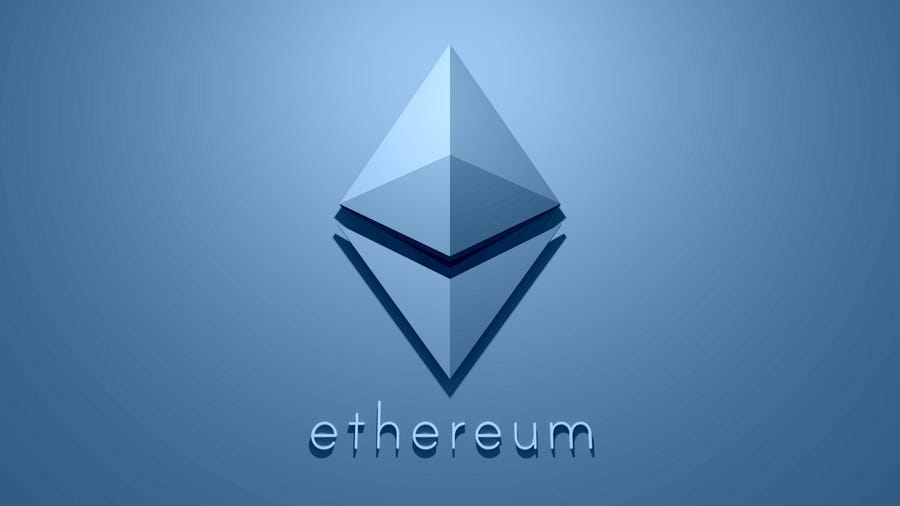
Over the last year, cryptocurrency has surged in popularity resulting in certain coins growing explosively. If you’ve heard of Bitcoin, chances are, you’ve also heard of Ethereum. But what is Ethereum? What does it do and why is it so popular?
Ethereum was launched in 2015 and is the most well-established, open-ended decentralized blockchain platform. If you know nothing about cryptocurrency, that definition will not help you understand what Ethereum is or what it does, so let’s break it down. The idea of Ethereum can be traced back to 8 co-founders, but now, only 27-year-old Vitalik Buterin is actively working on the network.
Decentralized Applications and Smart Contracts
Ethereum has its own programming language called Solidity, which can be used to create programs called smart contracts. A smart contract is code that will run exactly as programmed and can interact with other smart contracts. Once deployed, they are immutable, which means the code in a smart contract can’t be modified because it is permanently written and stored on the blockchain.
Dapp = Front-end user interface + smart contract back-end
Along with smart contracts, the Ethereum blockchain also allows for the creation of decentralized applications (dapps). Dapps are essentially digital programs that run on a blockchain, and have both front-end and back-end code. The front-end is the part that users interact with. This includes aspects such as fonts and colors. The back-end relates to writing code that focuses on the functionality to power the application and back-end work is never directly seen by the user. There are many industries that have already begun the use of dapps such as finance, gaming, online markets, and even social media.
Ethereum Gas
Adding to the Ethereum blockchain requires “gas” or fuel. For example, dapps have gas fees which are powered by the blockchain’s native token, Ether (ETH). Ether can be described as the gas or fuel for running commands on the Ethereum platform and is used by developers to build and run applications on the platform. Ether can also be traded as a digital currency on exchanges.
Ethereum vs Bitcoin
Considering that Ethereum is the second largest cryptocurrency by market cap and Bitcoin is the first, it makes sense that Bitcoin and Ethereum are often compared. However, Ethereum is very different from Bitcoin. For starters, one key difference between Bitcoin and Ethereum is that there can only be a certain amount of Bitcoin ever created. The total amount of Bitcoin that can ever be mined is 21 million. (As of June 2021, around 18.7 million have been mined). Its scarcity is the reason why Bitcoin is so valuable.
On the other hand, Ethereum has no hard cap. If you’re thinking, “hey if the supply outgrows the demand, then eventually won’t Ether be worthless?” That is a valid point but Ethereum developers thought about that issue. Ethereum relies on EIPs (Ethereum Improvement Proposals) to control inflation. So far, Ethereum has reduced the block reward twice through EIPs. EIP-1559 will go live in late July. Its proposal plans to change Ethereum’s fee dynamics by introducing a minimum fee to all transactions called the base fee. Under EIP 1559, the base fee is set automatically and is “burned” or removed. Once the base fee is burnt, it is permanently removed from the Ether supply. Previously, transaction fees were set by users and accepted entirely by miners. This new aspect of the base fee is controversial because instead of going directly to miners, the fee gets burnt. This proposal has upset many miners but could potentially cause a spike in ether’s value.
Another difference between Bitcoin and Ethereum is that no one knows who created Bitcoin. All we know is that the person(s) who developed bitcoin goes by the pseudonym Satoshi Nakamoto. Nakamoto reportedly owns about 1 million Bitcoin and given that there can only ever be 21 million BTC in circulation, his holdings can significantly affect the price. Ethereum was originally envisioned by a Russian-Canadian programmer named Vitalik Buterin. As mentioned earlier, along with Buterin, there were 7 other cofounders who are no longer working on the platform. Prior to creating the Ethereum Network, Buterin first became interested in Bitcoin. He co-founded the online news site Bitcoin Magazine in 2011. While writing hundreds of articles about what was happening in the crypto world, he became an expert on Bitcoin and developed an in-depth understanding of the blockchain. Eventually, he came up with the idea for the Ethereum network and in 2013, Buterin released its white paper, which described a platform designed for any kind of decentralized application that developers would want to build.
Last but certainly not least, another difference between the two cryptos is that Bitcoin was created to be an alternative medium of exchange and a store of value. Ethereum was designed to be a platform on which contracts and other applications can be built on. Ethereum is more than just currency.
Did You Know?
· Ethereum is abbreviated as “ETH”
· Some people argue that Bitcoin is technically the first dapp because its arrival provided blockchain network that enabled decentralized transactions between individuals
· Vitalik Buterin was 19 years old when he first conceived the idea of Ethereum
Further Learning
· Read What Exactly Is a Bitcoin? by Brainfeed
· View an extensive list of Altcoins
· Read a more thorough introduction to blockchain and crypto
---------------------------
By: Raj Mitaliya
Title: Intro to Ethereum
Sourced From: streetfins.com/intro-to-ethereum/
Published Date: Wed, 18 Aug 2021 22:22:00 +0000
Read More
Did you miss our previous article...
https://peaceofmindinvesting.com/clubs/five-reasons-smart-investors-are-looking-closely-at-whiskey-investments
.png) InvestingStocksToolsClubsVideosPrivacy PolicyTerms And Conditions
InvestingStocksToolsClubsVideosPrivacy PolicyTerms And Conditions
